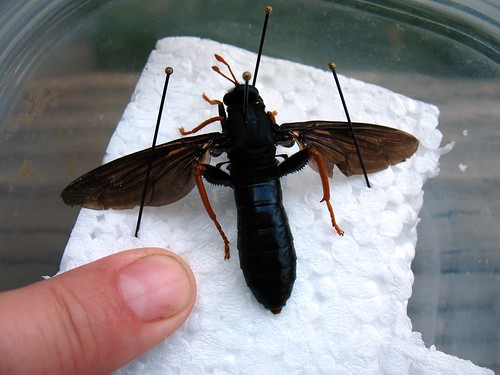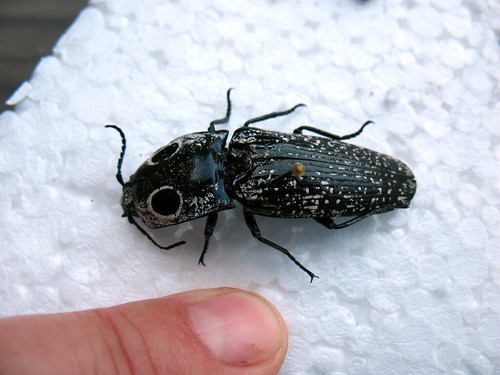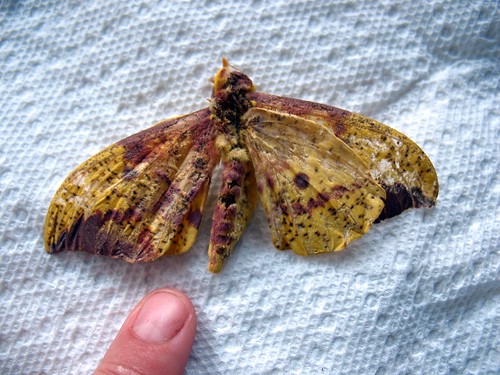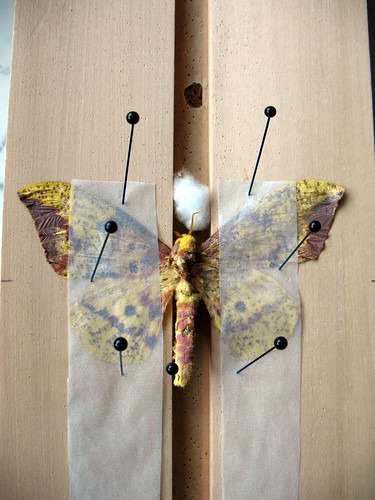How to find giant insects:
Week-long time, not many posts. We are still here! It is just summertime with a lot going on, so here we go again...
So, here are some advice on how to find giant insects based on recent experiences in New Jersey.
Option 1. You paint a room and leave a window open without having a screen in it to keep the insects out. A giant buzz follows and the largest blackest wasp you have ever seen will soon enter.

I ran out of the room (wasp allergy...), and PP came up to take a look at it, and we killed it with the hornet spray (sorry, but I just can't have wasps in the house). Looking closer, it turns out it was no wasp, it had only two wings. It was a fly! A fly that was nearly 7 cm between its wingtips and nearly 4 cm long from head to butt. Incredible. That was pinned for the collection of course.
Option 2. You take a walk on a road on a summer morning, early (say 7 AM), and keep looking down. That is how I found these two insects, also giant and gorgeous.

This 'double-eyed click beetle' ('knäppare' in Swedish, Alaus oculatis) I found was about 4 cm long, and was laying dead on the road. First it just looked like a piece of asphalt with white eyes painted on it, but I doubt that was evolutionary mimicry... I wonder how high this beetle can jump when it clicks on its back... 10 cm? It must be more than the small click beetles at least.

And then this. A fuzzy large yellow moth. It might have been killed by a car, or a bird. The body was damaged, but all the parts where still there, except one missing antennae. A quick google search for 'big yellow moth' made it clear that this is a male Imperial Moth (Eacles imperialis), a species I have never seen before.

The moth got pinned and mounted in a Swedish 'spännbräda' with waxpaper over its wings to dry its forms and shapes in proper arrangement for an insect collection, of course. Insects are really gorgeous and incredible. I highly recommend the book Extreme Insects for more of the biggest and most amazing 6-legged creatures.




2 comments:
The big fly has been identified by entomologists on Flickr:
It is a Mydas tibialis. Now, the next question is 'what is Mydas?". What does it eat, live on, survive? Is it a horse fly?
It is called the "golden legged mydas fly", and is endangered in Indiana (thanks Google).
Fantastic insects, LS! I especially like the two-eyed bug!
The Mydas fly was great to see. Please tell us more when you have found out if it´s a horsefly or a flower fly.
Post a Comment